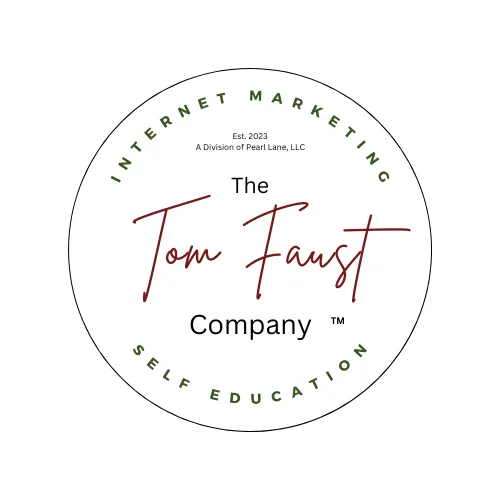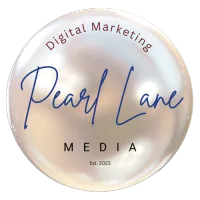Blogs
Blogs

The Ultimate Guide to Crafting Compelling Ad Copy
"Nobody reads ads. People read what interests them. Sometimes it's an ad." – Howard Gossage
Introduction: Unlocking the Secrets of Crafting Ad Copy
Crafting ad copy remains a cornerstone of effective marketing, an art form that marries psychology with strategic communication. In an era where consumers are bombarded with an abundance of advertisements, the ability to write compelling ad copy differentiates successful campaigns from the noise. It captivates, charms, and, most importantly, converts audiences into customers. A well-written advertisement utilizes words to create desire, convey benefits, and present solutions that directly meet the audience's needs.
Understanding the Importance of Ad Copy in Modern Marketing
Ad copy plays a crucial role in modern marketing efforts, as it is the bridge between a brand and its potential customers. This communication must instantly engage the audience, make an impression and prompt action. Companies rely heavily on the quality of their ad copy to improve their return on investment by driving traffic and the right traffic. Writing compelling ads has become an essential skill, with businesses seeking those who can consistently produce ad copy that delivers results, builds brand loyalty, and reinforces their market position.
The Goals of This Ultimate Guide
This guide aims to provide an indivisible toolbox for marketers and writers seeking to refine their skills in crafting ad copy. It endeavors to lay comprehensive groundwork, furnish nuanced techniques, and address challenges with practical advice, ensuring that readers will craft compelling ad copy with precision and creativity. This resource arms professionals with strategic insights that go beyond baseline knowledge, supporting them in leveling up their campaigns, and helping them achieve a seamless synergy of brand voice and consumer engagement. By the end of this guide, one's ability to improve ad copy should be significantly enhanced, leveraging the best practices to resonate with targets and achieve campaign objectives seamlessly.
The Fundamentals of Crafting Compelling Ad Copy
Clarity Is Key: Making Your Message Clear
In crafting ad copy, simplicity reigns supreme. Advertisers must distill their message to its essence, ensuring that the target audience immediately understands it. Effective ads refrain from overcomplicated language or jargon. Instead, they focus on a primary value proposition and a clear call-to-action, guiding potential customers through the desired journey. An ad intent on improving ad copy should articulate benefits concisely and spotlight the product's relevance to the consumer's needs.
The Power of Emotion: Connecting with Your Audience
Emotion drives action. This fundamental truth underlies the core of writing effective ads. They should resonate with viewers emotionally, triggering feelings that align with the ad's message. Whether it is joy, relief, excitement, or curiosity, compelling ad copy evokes an emotional response that forges a deeper connection between the brand and its audience. Through storytelling, strategic use of words, and understanding consumer psychology, advertisers can craft messages that inform and inspire.
Building Trust Through Authenticity
Today's consumers are exceptionally savvy and can detect disingenuous marketing efforts from a mile away. To build trust, compelling ad copy guide underscores the importance of authenticity. Brands must align their messaging with their actions and values. By doing so, they create a transparent and honest dialogue with their audience. Additionally, testimonials, endorsements, and user-generated content can serve as potent tools for substantiating claims and reinforcing the brand's credibility. Authenticity in ad copy not only fosters trust but also engenders loyalty, paving the way for lasting customer relationships.
Improving Ad Copy with Proven Techniques
The Rule of One: Focusing on a Single Message
When crafting ad copy, a crucial technique is the Rule of One, which entails spotlighting a solitary message. This approach ensures that the advertisement efficiently conveys its core proposition without overwhelming the audience with multiple points. Brands benefit from this clarity, as it steers potential customers toward a focused action, enhancing the ad's persuasive power and impact.
The Use of Persuasive Language
In writing effective ads, the use of persuasive language is non-negotiable. It involves carefully selecting words that evoke emotion, create urgency, or provoke thought, leading to higher engagement and conversion rates. Persuasive language should tap into the desires and challenges of the audience, offering solutions that seem tailor-made for them. By focusing on benefits rather than features, advertisers can connect more deeply with their target audience, compelling them to act.
Incorporating Social Proof to Enhance Credibility
Incorporating social proof can significantly enhance the credibility of ad copy. This technique leverages testimonials, endorsements, or data to validate the product or service being advertised. Showing evidence of customer satisfaction or expert approval can build trust and persuade others to follow suit. Social proof addresses potential skepticism and reinforces the decision-making process, making it a powerful tool for anyone aiming to improve ad copy.
Writing Effective Ads: A Step-by-Step Approach
Crafting a Compelling Headline
In crafting ad copy, a compelling headline stands as the ad's first impression, making or breaking the viewer's decision to engage further. The headline must be concise, directly addressing the reader's needs or curiosities and enticing them to read on. It should highlight the biggest benefit or differentiate the offering from competitors, often by triggering an emotional response or invoking curiosity. The headline is the pivot on which the success of the ad hinges, hence it must be tested and refined regularly.
Developing a Unique Value Proposition
A unique value proposition (UVP) sets the foundation of writing effective ads. It informs potential customers why they should choose your product or service over others in the market. For successful ad copy, the UVP should be clear, easy to understand, and succinctly encapsulate the core benefits. It should address specific pain points and demonstrate how the offering provides a solution, ultimately guiding customers toward making a purchase decision. Conveying this message in the ad copy requires a strategic blend of persuasive language and factual backing.
Employing a Clear and Compelling Call to Action
For an ad to drive action, a clear, compelling call to action (CTA) is critical. It directs consumers on what step to take next, whether it's to purchase, sign up, learn more, or get in touch. The CTA should be action-oriented, visually distinct, and create a sense of urgency. Phrases like "Shop Now," "Sign Up Today," and "Get Started" are effective when coupled with an incentive that enhances the proposition of clicking through. Crafting ad copy with a persuasive CTA iteratively improves conversion rates and should be a focal point of ad copy optimization efforts.
Optimizing with A/B Testing
To truly improve ad copy, one cannot rely on assumptions; this necessitates A/B testing, a method that compares different versions of the ad to determine which performs better. By methodically altering one element at a time—be it the headline, imagery, or CTA—marketers can understand the impact of each on the ad's performance. Measurable metrics such as click-through rates, conversion rates, and time spent on page are compared, providing actionable data to further refine and enhance the effectiveness of ad copy. Implementing this ongoing testing process assures that the ad's content remains resonant and successful in achieving its objectives.
Common Pitfalls in Crafting Ad Copy and How to Avoid Them
Steering Clear of Jargon and Complex Language
Crafting ad copy that resonates with a broad audience often stumbles on the use of jargon or complex language. Consumers seek clarity and ease of understanding. Marketers must ensure that the ad copy is accessible, using language that is simple and straightforward. This means avoiding technical terms or industry-specific lingo that might confuse or alienate potential customers. A helpful strategy is to focus on the benefits of the product or service rather than its technical attributes, thereby making the ad copy more relatable and comprehensible.
Avoiding Vagueness: Be Specific and Direct
One critical aspect of writing effective ads is the avoidance of vagueness. Consumers appreciate ad copy that is specific and direct. Clear and precise messaging helps in setting accurate expectations and aids in decision-making processes. Marketers should readily provide essential details such as features, pricing, and unique selling points, thus enabling the ad copy to effectively communicate the value proposition. Specificity not only captures attention but also fosters trust and credibility within the target audience.
Resisting the Urge to Over-Promise
In the pursuit of compelling ad copy, it's important to maintain integrity by resisting the urge to over-promise. Overstating capabilities or benefits can lead to customer disappointment and damage trustworthiness. Marketers should craft ad copy that promises only what the product or service can realistically deliver, ensuring that claims are substantiated with facts and evidential support. This approach aligns with the Expertise, Authoritativeness, Trustworthiness, and Experience principle, ultimately fostering a positive reputation and long-term customer relationships.
Advanced Strategies for Crafting Ad Copy that Converts
Utilizing Storytelling Techniques for Greater Impact
Employing storytelling in crafting ad copy maximizes emotional engagement and fosters a connective thread between consumers and brands. A compelling narrative weaves product features into a relatable storyline, transforming a mundane pitch into an inspiring experience. It prompts the consumer to envision a product or service within the context of their own life, thereby increasing the potential for conversion. Marketers strive to improve ad copy by embedding authentic stories that resonate with the target audience, invoking a sense of shared values and aspirations.
Leveraging Data and Consumer Insights
Data-driven strategies are instrumental in writing effective ads. Analyzing consumer behavior, market trends, and competitive insights allows for crafting ad copy that directly addresses the target audience's needs and preferences. Brands that leverage such data can tailor their message to reflect consumer desires, providing solutions that feel personalized and attentive to their customer base. By doing so, the ad copy feels less like a generic appeal and more like a conversation with the consumer, enhancing its persuasiveness and potential for conversion.
Adapting Copy for Different Platforms and Formats
Platform-specific nuances heavily influence the efficacy of ad copy. Each medium, from social media to email marketing, commands a unique approach to message and tone. A compelling ad copy guide acknowledges that brevity and sharp visuals reign supreme on platforms like Instagram, while LinkedIn thrives on professional language and value-driven content. Customizing ad copy for the various platforms ensures consistency in branding while optimizing engagement and conversion rates across different formats. Marketers must not only craft messaging that aligns with the platform's user behavior but also adapt to the evolving digital landscape to maintain the effectiveness of their ad copy.
Keeping Your Ad Copy Fresh: Tips for Continuous Improvement
Staying Updated with Market Trends
In crafting ad copy, it is essential to stay abreast of evolving market trends. An ad that does not resonate with current consumer interests or concerns can quickly become obsolete. Professionals committed to writing effective ads must immerse themselves in industry news, emerging social movements, and changes in consumer behavior. This knowledge equips them with the insight to develop ad copy that speaks directly to the audience's current needs and desires, ensuring that the message remains relevant and engaging.
Constantly Testing and Refining Ad Elements
Improving ad copy is an iterative process. It demands rigorous testing of various ad elements such as headlines, calls-to-action (CTAs), imagery, and copy length. A/B testing, for instance, is an effective way to gauge which versions of an ad resonate best with the target audience. By assessing performance metrics such as click-through rates and conversion rates, marketers can identify the most impactful elements. This data-driven approach allows for informed decisions in refining and optimizing ad copy, tailoring it to the preferences and actions of the audience segment the ad is intended for.
Gathering Feedback and Learning from Analytics
Gathering feedback is a critical strategy in the compelling ad copy guide. Directly engaging with the target demographic or leveraging focus groups can unearth invaluable insights into how the ad is perceived. Concurrently, learning from analytics provides a quantitative analysis of the ad's performance. Metrics such as engagement rates, bounce rates, and conversion goals offer concrete evidence of where the ad succeeds or falls short. By analyzing this data, marketers can iterate on their strategies, adjusting the ad copy for enhanced relevance and effectiveness. Ensuring the content aligns with the Expertise, Authoritativeness, Trustworthiness, and Experience principle solidifies the ad's value, offering users original, helpful content that answers their most pressing questions.
Conclusion: Writing Effective Ads That Resonate and Convert
Through meticulous crafting of ad copy, businesses forge a vital connection with their audience. The compelling ad copy guide provided has underscored the importance of clarity, persuasion, and the art of storytelling to captivate consumers. Precision has been the thread running through each strategy, ensuring every word counts towards writing effective ads.
Recap of Crafting Compelling Ad Copy Guide
It has been established that compelling ad copy hinges on a deep understanding of the target audience, coupled with a clear value proposition. Suffused with creativity and refined through A/B testing, effective ad copy stands as a compelling call to action. This guide has walked through the process of sharpening headlines, optimizing keyword use, and injecting emotion, thereby setting the foundation for ads that not only resonate but also convert.
Next Steps in Your Journey to Improve Ad Copy
The journey to improve ad copy is relentless, driven by changing consumer behaviors and competitive landscapes. The next steps involve immersion in analytics to discern what resonates with audiences. Continuous testing and refinement are imperative. One should absorb feedback, iterate on ad copy, and remain abreast of industry trends to ensure ad content remains fresh and relevant.
Encouragement to Apply the Guide and Measure Success
Employ the insights from the compelling ad copy guide with confidence. Engagement, conversion rates, and return on investment serve as clear indicators of the potency of one's ad copy. Therefore, encourage the deployment of these techniques and commit to a cycle of perpetual improvement. Track performance meticulously and make data-driven decisions to hone copywriting skills further. The competency in crafting ad copy is an evolving journey marked by perseverance and an insatiable quest for perfection in the realm of digital marketing.
Pearl Lane Media Can Help
If you're looking for professional help in crafting compelling ad copy that stands out in the crowded market, Pearl Lane Media can provide you with a range of services to help you achieve your goals. From copywriting, branding, and marketing solutions to social media management, our team of experts can assist you in creating an engaging brand voice, connecting with your audience emotionally, and building trust through authenticity.
FAQ
1. What are the key elements of crafting ad copy that converts?
Crafting ad copy that converts hinges on understanding the audience, highlighting benefits over features, creating a sense of urgency, and ensuring the ad is clear and concise. Effective ads resonate with the target demographic by addressing their pain points and offering a solution. A compelling call-to-action (CTA) encourages immediate response, while the overall message must be free from ambiguity to maintain trustworthiness.
2. How can one improve ad copy to drive better campaign results?
To improve ad copy, it's critical to test different versions and analyze performance data to see which resonates most with the audience. Continual optimization based on A/B testing is essential. Additionally, using persuasive language and power words can enhance the appeal. Emotional triggers that align with the user's expectations and desires often lead to improved engagement and conversion rates.
3. Why is audience research crucial in writing effective ads?
Audience research is vital in writing effective ads because it ensures that the messaging aligns with the interests, needs, and behaviors of the target audience. Understanding the audience allows marketers to craft ad copy that speaks directly to their desires, which increases the relevance and effectiveness of the ad. Tailoring the message to the audience can also establish a stronger connection and boost the authoritativeness of the brand.
4. Can storytelling be incorporated into ad copy?
Yes, storytelling can be a powerful tool in ad copy to engage users and make the brand more relatable. Narratives that evoke emotions or share customer experiences can solidify the ad's impact and memorability. However, the story must be relevant and add value to the ad's message to maintain its effectiveness and trustworthiness.
5. What role does testing play in crafting ad copy?
Testing plays a crucial role in crafting ad copy as it informs the strategy with empirical data. Through A/B tests and other analytics, marketers can identify which elements of the ad copy are performing well and which require tweaking. This data-driven approach ensures that the ad copy evolves based on actual user responses, facilitating continuous improvement in both engagement and conversion rates.


Hi, I am Tom Faust. I am a software developer, affiliate marketer, mentor, coach, and of course, author of this blog. If you like what you read, please consider subscribing!
If you are interested in operating your own online business, ENTRE has the highest integrity and quality of training I have found. For a very small fee you can access the Success Path Masterclass to find the best path for you.

I am a student of the ENTRE Institute affiliate training program, and it is one of the best decisions I've made for my business. The training is comprehensive, easy to follow, and the support and coaching from the ENTRE team is second to none.
Click the button below to get started.
Tom Faust Company is a division of Pearl Lane, LLC

